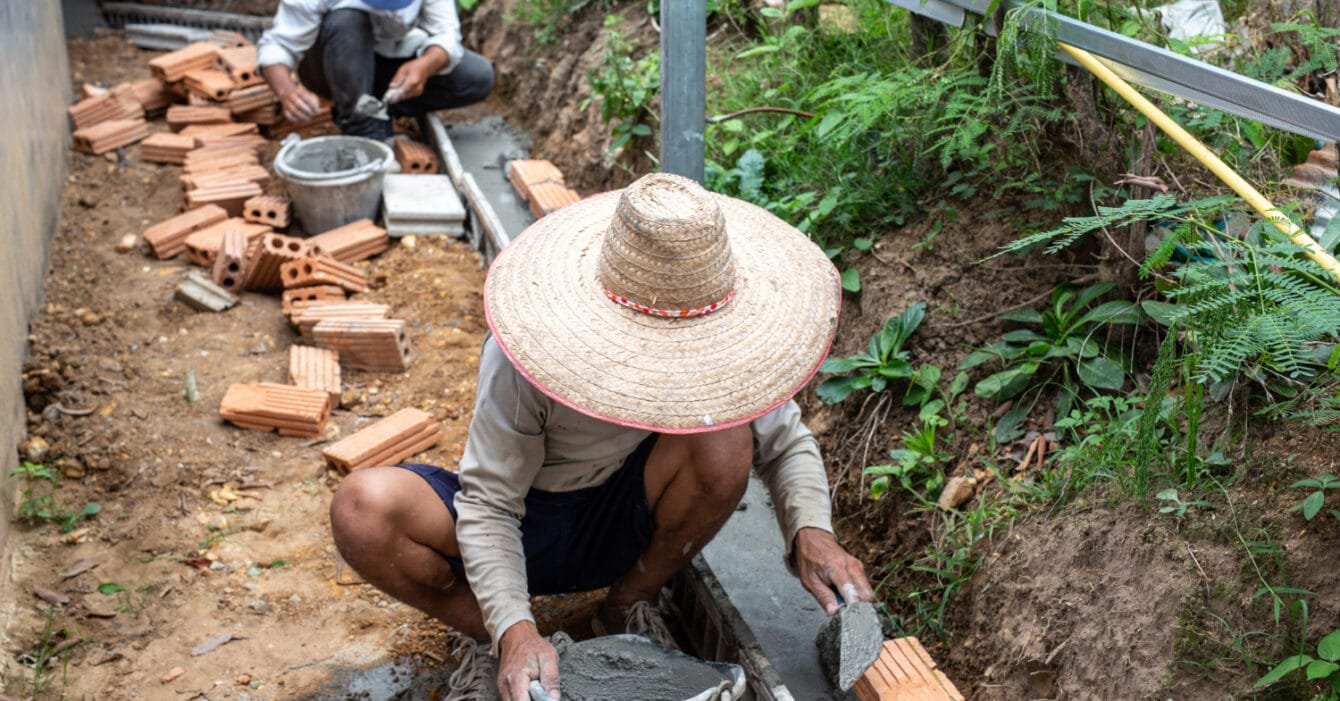Thailand’s construction industry faces a mounting challenge: a critical shortage of skilled labor. With a rapidly aging population and declining birth rates, the country’s workforce is shrinking. As a result, it’s intensifying the pressure on its industries to fill roles with competent, qualified workers. Skilled labor in Thailand construction is becoming a rare asset, which is impacting industry growth and limiting the country’s economic potential.
Demographic Challenges and Workforce Decline
As mentioned above, Thailand’s population dynamics contribute significantly to the labor crisis. With a Total Fertility Rate (TFR) of just 1.16 in 2023, Thailand ranks among the lowest in the ASEAN region, placing the nation on the path toward a “super-aging” society by 2036. The country’s old-age dependency ratio is expected to exceed 50% by 2045, meaning that a large portion of the population will be aged 60 and older. This demographic shift results in fewer working-age individuals and an increased number of retirees. It’s creating a long-term strain on the Skilled Labor in Thailand Construction available.
According to the National Economic and Social Development Council (NESDC), by 2037, Thailand’s workforce demand will reach 44.71 million, but only around 40.7 million people will be of working age. This discrepancy highlights a need for intervention to attract and retain talent in construction and other key sectors.
Rising Demand for Skilled Labor in Thailand Construction

The shortfall of skilled workers is further evidenced by data from December 2023, which revealed a significant gap between job vacancies and applicants. This is particularly in positions requiring vocational training.
For every 100 jobs, there were just 14 applicants, and Skilled Labor in Thailand Construction with vocational certificates were especially scarce. This shortage affects not only construction but also digital services, automotive, and healthcare sectors. All of which are crucial for Thailand’s economic resilience.
Read More: Why Growth in Thailand’s Green Building Movement Matters
Immigration as a Temporary Solution
To alleviate the shortage of Skilled Labor in Thailand Construction, the country has turned to migrant workers from neighboring countries. This includes Myanmar, Laos, Cambodia, and Vietnam. As of March 2024, nearly 92% of migrant workers in Thailand filled general labor positions, with 60% occupying middle-skilled roles.
However, relying solely on migrant labor has limitations, especially for highly specialized construction roles. While liberalizing immigration policies might provide temporary relief, a more robust, long-term approach is needed.
Investment in Human Capital and Training Programs
To address the underlying issue of Skilled Labor in Thailand Construction, it’s ramping up efforts in human capital investment. The National Research Council of Thailand (NRCT) has set a target to raise R&D spending to 2% of GDP by 2024. Additionally, provincial skills development programs are being implemented to encourage local talent to pursue vocational training. To be exact, training that meets regional demand. It’s being offered to students in local schools, vocational institutes, and even correctional facilities. The country aims at bolstering workforce numbers in high-demand areas such as construction.
In tandem with government initiatives, private companies are joining forces to bridge the skills gap of Skilled Labor in Thailand Construction. Through collaboration with vocational schools, companies are working on skill-specific curriculums. They introduce in-house training programs to equip workers with practical experience. Companies like Charoen Pokphand Group have pioneered such initiatives by establishing educational institutions to train their own employees. That way, they meet the demand for skilled labor internally.
Read More: The Hidden Growth of Urbanization and Construction Thailand
Programs offered by the Department of Skill Development (DSD) also provide comprehensive skill training, covering technical abilities like IT and digital literacy. Similarly, workers will receive training for soft skills such as communication, discipline, and teamwork. Such training helps companies increase productivity, reduce operational costs, and prepare workers for more advanced roles in high-demand industries.
Moving Toward as Skilled Labor in Thailand Construction
As the labor shortage continues to challenge the construction industry, a multifaceted approach is essential. Combining workforce training, immigration reform, private-public partnerships, and targeted educational investments offers a way forward. Addressing the shortage of Skilled Labor in Thailand Construction will not only benefit the industry but also support Thailand’s broader economic development goals. With ongoing commitment from both public and private sectors, Thailand has the potential to build a resilient and skilled workforce. Hopefully, they will be capable of sustaining growth in the years to come.

